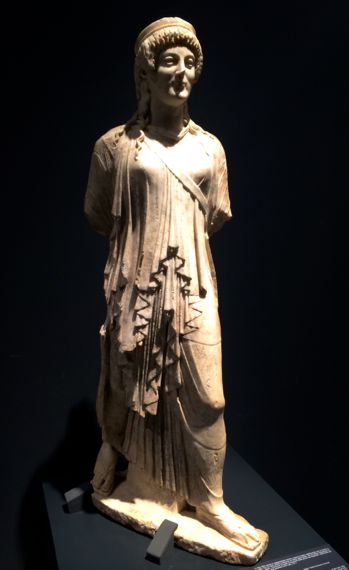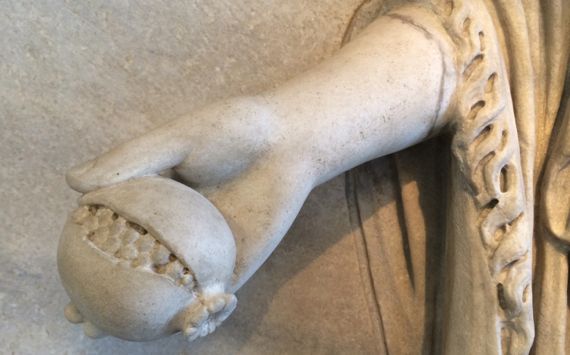
We did the museum thing today. One museum: the National Museum, or the Museo Nazionale Romano di Palazzo Massimo (it has three additional locations).
The collections shown are, as far as I could tell, from Rome and Ostia, Rome’s port town. The two communities acted economically as a unit, more or less, one with the port and one with most of the population, and the political/economic center. The museum’s displays are terrific, and there’s an English translation on most of the signs that’s pretty good.
This is a statue of the Greek goddess Artemis, considered equivalent of the Roman’s Diana. That’s her arrow-sling strap across her shoulder, and when complete, she would have held a bow and arrows in her right hand. I love the flow of her garment. The statue dates to the early 1st C AD, and is in the Greek style.

Viewing these exhibits brought our focus to the specific, and allowed insights into how people lived in and used spaces we’ve only seen as walls so far. I especially loved the frescoes that conservators managed to remove from several villae, including the Villa Farnesina ruins on the bank of the Tiber on the west bank just upstream of today’s Ponte Sisto. Doesn’t this pair get you in the partying mood?


These are details from two bas-relief figures on large panels that were part of the Temple of Hadrian in the Campus Martius (more detail in Italian). I love that you can tell that one figure is holding a pomegranate, and the other green onions. The temple survives (at least above ground and visible from the street) as a line of columns and the wall close behind it, incorporated into the 17th–C papal palace that is now the stock exchange. The sign said they date to AD 145.
Still the focus of the exhibits is on the unusual, the best-preserved, and the ways of the wealthy/elites. I kept wondering about the living situation of most of the populace, etc. Loved the coins in the basement, as the text tied them to historical changes—e.g., when the popes began minting money, which happened under Eugenius IV, who reigned from 1431–47.